

|
|
|


|
|
1/10 Scale Electric Rock Crawler:
Caster Racing TRC104 RTR (Radio Controlled Model Review)History and Info:
Introduced by Caster Racing circa 2015, the TRC104 EP RTR Speedy Crawler Electric Rock Crawler, was available in Brushed and Brushless versions, and came "With a Battery and Charger" - TRC104RTR003 (Brushed) and TRC104RTR001 (Brushless) - or Without a Battery or Charger - TRC104RTR004 (Brushed) and TRC104RTR002 (Brushless). All versions came with a 2.4Ghz Radio System, Motor, ESC, Steering Servo and a Pre-Painted Bodyshell (Specifications may vary from country to country).
▼ Scroll Down for More Images ▼
|








|
|
|

★ Team Caster TRC104 RTR Rock Crawler ★
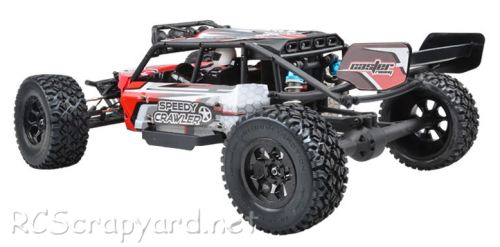
★ Team Caster TRC104 RTR Rock Crawler Chassis ★
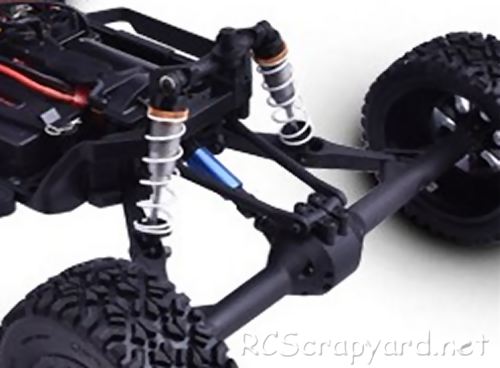
★ Team Caster TRC104 RTR Rock Crawler Chassis ★
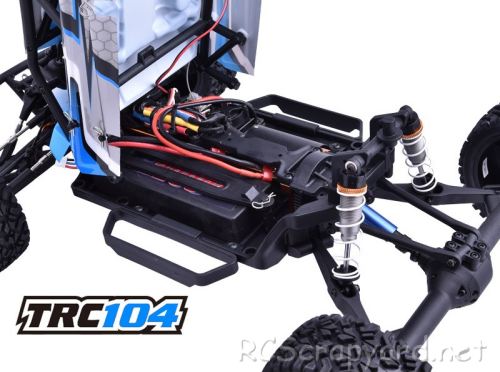
★ Team Caster TRC104 RTR Rock Crawler ★
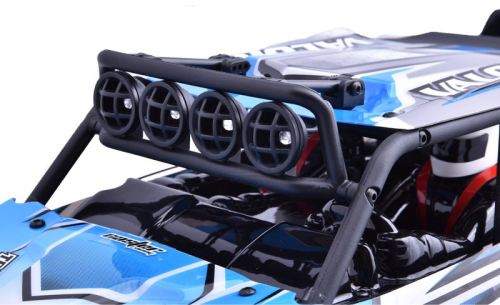
★ Team Caster TRC104 RTR Rock Crawler Chassis ★
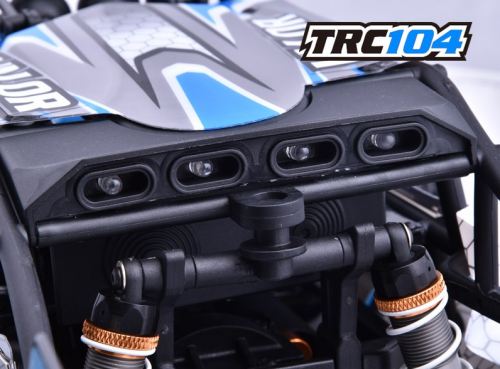
★ Team Caster TRC104 RTR Rock Crawler ★
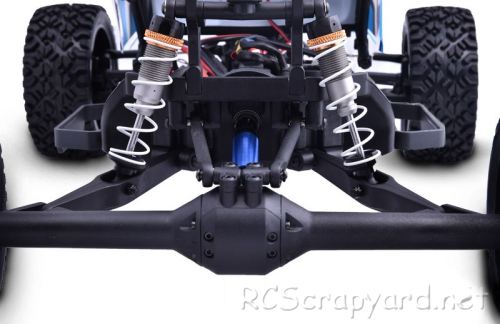
★ Team Caster TRC104 RTR Rock Crawler Chassis ★
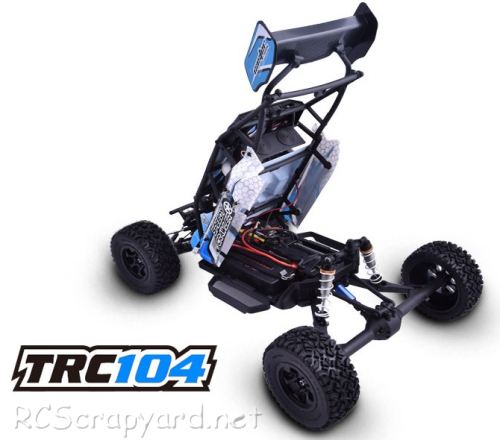
★ Team Caster TRC104 RTR Rock Crawler Chassis ★
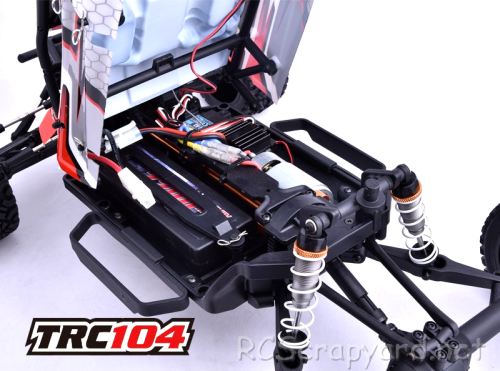
|
Buying a Used Caster Racing Rock Crawler (and What to look for)
Make a General Visual Inspection
Check the Body-Shell
If the body shell of your Rock Crawler is broken, ripped or damaged in any way, this can be easily repaired with rubber solution glue. Also, for added protection and if available for your model, fit an under guard to stop dirt and gravel entering the chassis. Drive Shafts and Turnbuckles
Examine the Drive System
The gearbox of your used Rock Crawler should be opened up to check for damaged gears and wear. If there is excessive backlash in the gearing, these should be replaced. A thin coat of grease on the gears is enough to allow smooth operation and reduce further wear. Pinions and Spur Gears
Steering Servo and Servo-Saver
Don't Forget those Bearings
|
|
Manufacturers and Brands Catalogued and Listed by RC-Scrapyard.
At present, the RC Model Manufacturers, Brands and Distributors covered by us are: ABC Hobby, Academy, Acme Racing, Agama Racing, Amewi, Ansmann Racing, ARRMA, Team Associated, Atomic RC, Axial, AYK, Bolink, Caster Racing, Capricorn, Carisma, Carson, Caster Racing, Cen, Corally, Custom Works, Durango, Duratrax, ECX - Electrix, Exceed RC, FG Modellsport, FS-Racing, FTX, Fujimi, Gmade, GS-Racing, Harm, HBX, Helion, Heng Long, Himoto Racing, Hirobo, Hitari, Hobao, Hong-Nor, Hot Bodies, HPI, HSP, Intech, Integy, Jamara, JQ Products, Kawada, Kyosho, Losi, LRP, Maisto, Mardave, Marui, Maverick, MCD Racing, Megatech, Mugen, New Bright, Nichimo, Nikko, Nkok, Ofna, Pro-Pulse, Protech, PTI, RC4WD, Redcat Racing, RJ-Speed, Robitronic, Schumacher, Seben, Serpent, Smartech, Sportwerks, Step-Up, Tamiya, Team-C Racing, Team Magic, Thunder Tiger, Tomy, Top Racing, Traxxas, Trinity, Tyco, Vaterra RC, Venom, VRX Racing, WLToys, X-Factory, Xmods, Xpress, Xray, XTM, Yankee RC, Yokomo, ZD Racing and Zipzaps. |
|
Hints, Tips and Information
Shock Mount Settings
The combinations of Shock settings available on the majority of on and off road cars are far too many for this article to cover, so I will endeavour to explain some of the basics, that should give you some idea what these changes might achieve. Some of the settings suggested may not be available on all RC model cars. |
|
Hints, Tips and Information
Toe Angle - for Steering and Straight Line Stability
When you first build your RC model car, you will no doubt have made all the settings advised in the manufacturers' manual and will take it out on the back yard not thinking of things like camber, caster or toe-in - I know I did. It's only when you get competitive that you start learning about these things and just what a big difference they can make to the handling of your car. One of the more effective of these adjustments is Toe-in. |
|
RC Models:
|
Radio & Motors: |
Other
Accessories: |